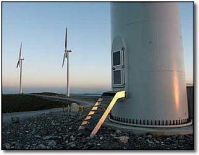Nearly 1,500 MW of private wind energy development may become utility-scale projects, literally, in the near future.
American Electric Power announced Monday that its Public Service Co. of Oklahoma (PSO) and Southwestern Electric Power Co. (SWEPCO) entities are seeking regulatory approval to purchase three wind projects currently under development in Oklahoma. Altogether, these acquisitions would cost nearly $2 billion, according to the release.
In the long run, though, AEP says the investment would save SWEPCO and PSO customers about $3 billion over 30 years.
The projects include a 999-MW wind facility being built north of Weatherford, a 287-MW wind facility being built southwest of Enid, and a 199-MW facility being built south of Alva. They are being developed by Invenergy.
These projects were selected after competitive Request for Proposals (RFPs) to procure low-cost wind generation options for PSO and SWEPCO customers. The 199-MW project is projected to be completed by the end of 2020. The other projects will be completed by the end of 2021.
“AEP continues to add clean, renewable generation to our power plant fleet, driven by the expectations of our customers and technology advances,” AEP CEO Nicholas Akins said in a statement. “Purchasing these wind facilities is consistent with our strategy of investing in the energy resources of the future, and it will save our customers money while providing significant economic benefits to local communities.”
The three wind projects would provide more than 5.7 million MWh of new wind energy annually to serve customers in Arkansas, Louisiana, Oklahoma and Texas. Under the plan SWEPCO would own 55 percent of the projects, with PSO holding the remaining 45 percent.
The projects are subject to regulatory approvals in Arkansas, Louisiana, Oklahoma and Texas, as well as from the Federal Energy Regulatory Commission. The amount of generation acquired by PSO or SWEPCO can be scaled, subject to commercial limitations, to align with individual state resource needs as determined by the respective state commissions.





